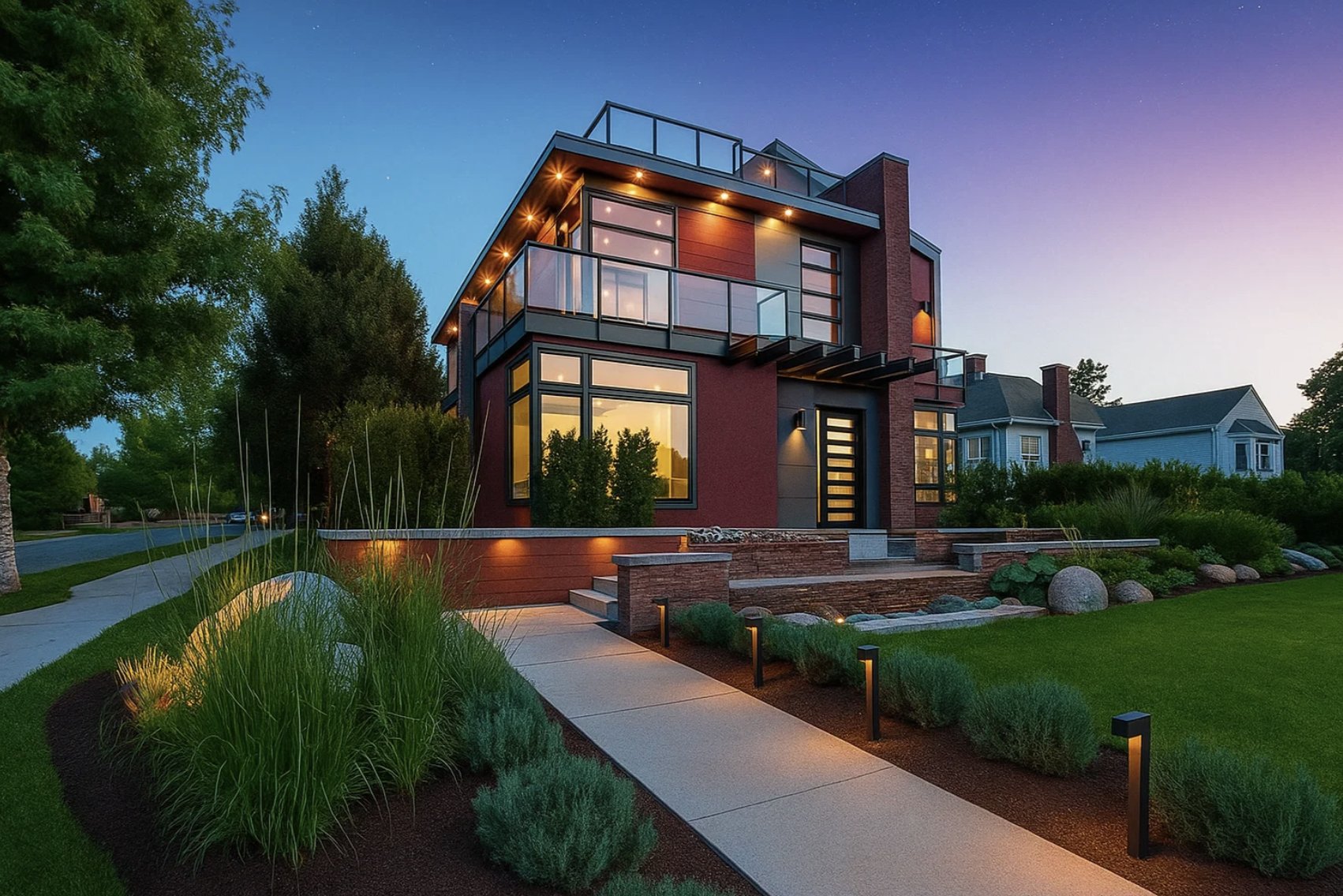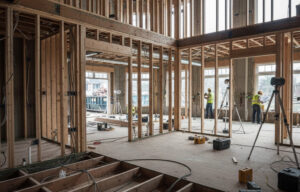The main difference between a general contractor and a design-build company lies in how the project is managed, who handles the design, and how costs and communication are controlled.
When building a luxury custom home in Vancouver, this choice affects cost control, timelines, and how smoothly the project runs. Understanding these differences helps homeowners decide which approach fits their goals, level of involvement, and expectations for design quality.
This article explains how each model works and what to consider when choosing between them.
What a General Contractor Does
A general contractor (GC) manages the construction phase after the design is complete. The homeowner hires an architect or designer first, and then brings in a GC to execute the plans.
The general contractor’s main responsibilities include:
- Hiring and coordinating subcontractors such as framers, electricians, and plumbers.
- Managing the construction schedule and day-to-day site activity.
- Ordering materials and ensuring work meets building code standards.
- Communicating progress updates and handling change orders.
In this model, design and construction are separate. The architect, designer, and builder work as independent parties. This can create gaps in coordination or add time if drawings need revisions once construction starts.
Advantages
- Flexibility to choose your own architect and builder.
- Suitable for straightforward builds or smaller renovations.
Limitations
- Communication moves through several channels, which can slow decision-making.
- Budget accuracy often improves only after the final design is complete, leaving less room for adjustments.
- Disputes over design intent or construction errors can lead to extra costs or delays.
The general contracting model works best for homeowners who already have detailed plans, want direct control over the design phase, and are comfortable managing separate relationships for design and construction.
What a Design-Build Company Vancouver Does

A design-build company manages the entire project from concept to completion under one contract. The same team handles design, permitting, and construction, creating a single point of contact for the homeowner.
It’s an approach also favored by established firms like a Design-build construction company Langley, where architects, engineers, and project managers collaborate early to align the design with the homeowner’s budget, lifestyle, and site conditions. This early collaboration helps avoid redesigns, cost overruns, and schedule delays.
Key responsibilities of a design-build company include:
- Creating architectural plans and 3D concepts.
- Preparing permit documents and coordinating with city officials.
- Managing budgets and schedules through each design stage.
- Overseeing all trades, materials, and on-site construction.
- Maintaining consistent communication with the homeowner throughout the process.
Advantages
- One contract and one team reduce miscommunication.
- Costs are tracked in real time as design decisions are made.
- Design and construction overlap, which can shorten the total project timeline.
- The team shares full accountability for both design accuracy and build quality.
Limitations of Design-Build Company Vancouver
- Less flexibility to use an outside architect or designer.
- The homeowner relies heavily on the company’s internal design expertise.
The design-build model is preferred for luxury custom homes in Vancouver, where complex design details, high-end materials, and tight schedules benefit from close coordination between all professionals involved.
Key Differences Between the Two Approaches

Both general contractors and design-build companies can deliver quality homes, but the way they manage the process is different. The key differences come down to communication, cost control, accountability, and timeline.
| Aspect | General Contractor | Design-Build Company |
| Project Start | Hired after the architectural plans are complete. | Involved from the concept stage through completion. |
| Communication | Multiple points of contact between homeowner, architect, and builder. | Single point of contact throughout the entire project. |
| Cost Control | Pricing happens after design is finalized, leaving less flexibility. | Budgeting runs alongside design for early cost visibility. |
| Accountability | Responsibility is split between designer and builder. | One team is accountable for both design and construction. |
| Timeline | Design and build phases happen separately, extending total duration. | Overlapping phases reduce total project time. |
| Change Management | Changes often require revisions to plans and new estimates. | Adjustments are handled faster through the integrated team. |
In Vancouver’s luxury home market, where custom features and detailed design are common, the design-build model often provides better coordination and cost predictability. However, the general contracting model can still work well for homeowners who prefer to keep design and construction as separate contracts.
Which Model Fits Luxury Homes in Vancouver

Both models can achieve beautiful results, but for luxury homes and high-end home renovations Coquitlam, the design-build model typically offers greater efficiency and collaboration.
These projects involve detailed architecture, premium materials, and precise coordination between design and construction. Having one team manage every stage reduces the risk of miscommunication and ensures design intent carries through to completion.
Why design-build fits luxury projects:
- Early budgeting allows homeowners to see how design choices affect costs in real time.
- Integrated teams help manage high-end materials, custom layouts, and advanced systems.
- Overlapping design and construction phases shorten timelines and reduce delays.
The general contracting model still suits certain projects. It works best when:
- The homeowner already has complete architectural plans.
- There’s a desire to hire and manage the architect separately.
- The project is smaller in scale or less design-intensive.
Ultimately, the right choice depends on the project’s size, design complexity, and the homeowner’s preferred level of involvement. Both models can deliver excellent results when aligned with clear goals and realistic expectations.
Conclusion
Choosing between a general contractor and a design-build company comes down to project needs and how you want to manage the process. Design-build works best for complex or high-end homes where design and construction must stay aligned. Having one team handle everything keeps communication direct and budgets consistent.
A general contractor suits projects with completed plans or homeowners who prefer to manage design separately. Both options can deliver strong results when matched to clear goals, realistic budgets, and the right level of homeowner involvement.




